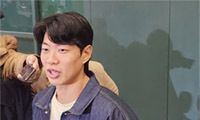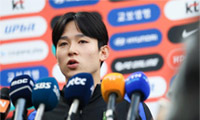
Yes, that book is upside-down. David Bunnell believes reading inverted type helps keep his mind sharp.
By KATIE HAFNERSAN FRANCISCO - When David Bunnell, a magazine publisher who lives in Berkeley, California, went to a Federal Express store to send a package a few years ago, he suddenly forgot an important piece of information.
“I couldn’t remember my address, said Mr. Bunnell, 60, with a measure of horror in his voice. “I knew where I lived, and I knew how to get there, but I didn’t know what the address was.
Mr. Bunnell is among tens of millions of baby boomers, who were born roughly between 1946 and 1964 and who are now encountering the signs, by turns amusing and disconcerting, that accompany the decline of the brain’s acuity: a good friend’s name suddenly vanishing from memory; a frantic search for eyeglasses only to find them atop the head; milk taken from the refrigerator then put away in a cupboard.
“It’s probably one of the most frightening aspects of the changes we undergo as we age, said Nancy Ceridwyn, director of educational initiatives at the American Society on Aging. “Our memories are who we are. And if we lose our memories we lose that groundedness of who we are.
At the same time, people are seizing on a growing body of evidence that suggests that brains contain more plasticity than previously thought, and many people are taking matters into their own hands, doing brain fitness exercises with the same intensity with which they approach their gym workouts.
“Most people when they turn 50 begin to look at forgetfulness with more seriousness, said Dr. Gene Cohen, the director of the Center for Aging, Health and Humanities at George Washington University.
“When you misplace your keys when you’re 25, you don’t pay any attention to it, he said. “But when you do the identical thing at 50 or older, you raise an eyebrow.
Dr. Cohen, who recently conducted a study of people born from 1946 to 1955, the first half of the baby boom, said he was struck by the number of respondents who believe they can do things on their own to enhance the vitality of their brains.
“There is a gradual growing awareness that challenging your brain can have positive effects, Dr. Cohen said. He said the plasticity of the brain is directly related to the production of new dendrites, the branched, tree-like neural projections that carry electrical signals through the brain. “Every time you challenge your brain it will actually modify the brain, he said. “We can indeed form new brain cells, despite a century of being told it’s impossible.
In pursuit of his own dendritic growth, Dr. Cohen plans to take up the piano again after years of not playing. He is also sketching out a science-fiction novel he hopes to write.
Dr. Cohen says that although he understands the fear of Alzheimer’s, many people are unduly anxious about it. “The bottom line question to ask is, Is your forgetfulness fundamentally interfering with how you function? said Dr. Cohen. “If it doesn’t fundamentally mess up your work or social life, it’s among the normal variants.
A number of products target the growing interest in the brain’s fitness.
Nintendo’s $19.99 Brain Age 2, a popular video game of simple math and memory exercises, is one form of brain exercise. Posit Science’s $395 computerbased “cognitive behavioral training exercises are another. MindFit, a $149 software-based program, combines cognitive assessment of more than a dozen different skills with a personalized training regimen based on that assessment. And for about $10 a month, worried boomers can subscribe to Web sites like Lumosity.
com and Happy-Neuron.
com, which offer a variety of cognitive training exercises.
Alvaro Fernandez runs a brain fitness and consulting company, SharpBrains, with a Web site focused on brain fitness research. He estimates that in 2007 the market in the United States for so-called neurosoftware was $225 million.
Mr. Fernandez pointed out that compared with, say, the physical fitness industry, which brings in $16 billion a year in health club memberships alone, the brain fitness software industry is still in its infancy. Yet it is growing at a 50 percent annual rate, he said, and he expects it to reach $2 billion by 2015.
New companies like Navigenics, 23and- Me and deCODE genetics are charging around $1,000 to test an individual’s DNA for various risk factors, including Alzheimer’s.
Mr. Bunnell, whose magazine, Eldr, is aimed at aging boomers, took the 23and- Me test and learned that his genetic risk is below average. Still, Mr. Bunnell is not sure he trusts the report, as one of his grandparents had dementia, and his mother may have had Alzheimer’s .
To keep embarrassment to a minimum, Mr. Bunnell now does regular brain calisthenics, largely avoiding expensive software in favor of simpler solutions. He works at memorizing the numbers that swirl around his daily life - like credit cards or phone numbers - and devises mnemonics for remembering people’s names.
“Smart people find new ways to exercise their brains that don’t involve buying software or taking expensive workshops, he said.
스마터리빙
more [ 건강]
[ 건강]이제 혈관 건강도 챙기자!
[현대해운]우리 눈에 보이지 않기 때문에 혈관 건강을 챙기는 것은 결코 쉽지 않은데요. 여러분은 혈관 건강을 유지하기 위해 어떤 노력을 하시나요?
 [ 건강]
[ 건강]내 몸이 건강해지는 과일궁합
 [ 라이프]
[ 라이프]벌레야 물럿거라! 천연 해충제 만들기
 [ 건강]
[ 건강]혈압 낮추는데 좋은 식품
[현대해운]혈관 건강은 주로 노화가 진행되면서 지켜야 할 문제라고 인식되어 왔습니다. 최근 생활 패턴과 식생활의 변화로 혈관의 노화 진행이 빨라지고
사람·사람들
more많이 본 기사
- 법무부, 엡스타인 자료 추가 공개… “전용기에 트럼프 8번 타”
- 조지아서 역주행 승용차 덮쳐 한인 등 2명 사망
- 박나래, 논란 또 추가..이번엔 ‘나혼산’ 조작 방송 의혹
- ‘헉’ 오바마케어 보험료가 연 4만불… 1
- 트럼프 “국가안보 위해 그린란드 필요…우리가 가져야”
- 임윤아, 여우 주연상 쾌거.. “멋진 상 감사합니다”
- 46회째 1등 안나온 파워볼 복권…당첨금 약 16억 달러로 껑충
- 트럼프, 美 3분기 깜짝성장 “관세 덕” 주장하며 대법원 압박
- 특검, “국정농단” 건진법사 징역 5년 구형…김건희는 증언 거부
- 닻올린 내란전담재판부 안착할까…尹측은 “위헌심판 신청”
- 이영지 맞아? 러블리 분위기 물씬..180도 달라진 ‘뼈말라’ 몸매
- ‘트롯돌’ 손태진, 오디션 우승상금 7~8억?.. “무서워서 1년 넘게 안 썼다”
- ‘차량 링거’ 전현무 의료법 위반 고발당해… “적법한 진료” 해명
- “ATM기 사용하기 겁나네”
- 美서 돌아온 푸틴 특사…러, 우크라 평화안 대응 촉각
- 이번엔 ‘먹는 비만약’ 경쟁…알약 위고비, 미국서 판매 승인
- 송성문, 메디컬테스트에 초긴장 “혹시 뭐 나올까 걱정했다→미국 열심히 갔는데 맨손으로 돌아올까봐”
- 양민혁·배준호 등 병역특례 기대감 커졌다, 日 자국 아시안게임도 ‘U-21’ 참가
- 엔비디아칩 중국 밀반입?… “미국 정부, 싱가포르 업체 조사중”
- “美국방부, 中격납고에 ICBM 100기이상 장전돼 있을것으로 판단”
- [새해 강화되는 노동법] 가주서 노동… 1
- ICE 홈디포 급습 한인 체포
- 올해 워싱턴DC 식당 92곳 폐업…‘역대 최다’
- ‘남가주 사랑의 교회’ 이원준 담임목사 부임
- ‘거액 탈세·통관 사기’ 한인 통관브로커 중형
- 남가주 사랑의교회 노창수 목사 은퇴식
- 9세 영 아티스트 박리하 ‘2026 LA 아트쇼’ 참가
- 21년간 장학금 총 60만 달러 지급
- 美·인니, 관세협정 모든 쟁점에 합의…내년 1월 양국 정상 서명
- 2명에 모두 7,500달러 장학금
- 악명 높은 갱단 연루 한인 기소
- 1,480원까지 돌파한 환율… “내년에도 고공 행진”
- 4인 가족 보험료가 4만불까지… 중산층‘불안’
- MD 로우스 직원, 지게차로 70대 노인 살해
- 美 경제 3분기 4.3% ‘깜짝 성장’…강한 소비가 성장견인
- 밀알·노숙자센터에 1,500달러씩 기부
- ‘올해는 ICE 이민자 체포 광풍의 해’
- 베네수엘라 봉쇄에 금·은 값 또 최고
- ‘크리스마스 캐롤’과 산타 클로스 1
- 中과 무역갈등 휴전한 美 “中반도체 추가관세 18개월간 보류”
- ‘뉴욕한인의 밤’ 일반한인 참여 문턱 낮췄다
- ‘K-도넛’, 남가주 진출·본격 확장
- ‘연방하원 도전장’ 척 박 예비후보 후원모임
- 중국 시온교회 목회자 체포… 미주 한인교계 등 ‘기도와 지원’
- 연말 여행객 최다… LAX 공항 ‘대혼잡’
- 워싱턴 일원서 600만명 장거리 여행 떠난다
- 미주한인경찰협회, 지역 고교생 4명에 장학금 전달
- 재외공관들 성탄연휴 휴무 ‘제각각’
- 트럼프, GDP 호조에도 “금리 내려야…동의못하면 연준의장 안돼”
- 한인 최초 NASA 우주비행사 조니 김 “우주서 김치·밥 그리웠다”
1/5지식톡

-
 미 육군 사관학교 West Poin…
0
미 육군 사관학교 West Poin…
0https://youtu.be/SxD8cEhNV6Q연락처:wpkapca@gmail.comJohn Choi: 714-716-6414West Point 합격증을 받으셨나요?미 육군사관학교 West Point 학부모 모…
-
 ☝️해외에서도 가능한 한국어 선생님…
0
☝️해외에서도 가능한 한국어 선생님…
0이 영상 하나면 충분합니다!♥️상담신청문의♥️☝️ 문의 폭주로 '선착순 상담'만 진행합니다.☎️ : 02-6213-9094✨카카오톡ID : @GOODEDU77 (@골뱅이 꼭 붙여주셔야합니다…
-
 테슬라 자동차 시트커버 장착
0
테슬라 자동차 시트커버 장착
0테슬라 시트커버, 사놓고 아직 못 씌우셨죠?장착이 생각보다 쉽지 않습니다.20년 경력 전문가에게 맡기세요 — 깔끔하고 딱 맞게 장착해드립니다!장착비용:앞좌석: $40뒷좌석: $60앞·뒷좌석 …
-
 식당용 부탄가스
0
식당용 부탄가스
0식당용 부탄가스 홀세일 합니다 로스앤젤레스 다운타운 픽업 가능 안녕 하세요?강아지 & 고양이 모든 애완동물 / 반려동물 식품 & 모든 애완동물/반려동물 관련 제품들 전문적으로 홀세일/취급하는 회사 입니다 100% …
-
 ACSL 국제 컴퓨터 과학 대회, …
0
ACSL 국제 컴퓨터 과학 대회, …
0웹사이트 : www.eduspot.co.kr 카카오톡 상담하기 : https://pf.kakao.com/_BEQWxb블로그 : https://blog.naver.com/eduspotmain안녕하세요, 에듀스팟입니다…
케이타운 1번가
오피니언
 조환동 / 편집기획국장·경제부장
조환동 / 편집기획국장·경제부장 AI로 가속화되는 노동시장 개편
 민경훈 논설위원
민경훈 논설위원‘크리스마스 캐롤’과 산타 클로스
 정재민 KAIST 문술미래전략 대학원 교수
정재민 KAIST 문술미래전략 대학원 교수 [정재민의 미디어풍경] 적과의 동침, 협력하며 경쟁하기
 김영화 수필가
김영화 수필가 [화요칼럼] 단호박의 온기
 김정곤 / 서울경제 논설위원
김정곤 / 서울경제 논설위원[만화경] 안중근의사 유해봉환 사업
 권지숙
권지숙 오후에 피다
 옥세철 논설위원
옥세철 논설위원말살되고 있는 유럽의 성탄절 전통, 그 원인은…

외로운 이웃들
 조지 F·윌 워싱턴포스트 칼럼니스트
조지 F·윌 워싱턴포스트 칼럼니스트 [조지 F. 윌 칼럼] MIT에 대한 트럼프의 무분별한 공격
1/3지사별 뉴스

‘연방하원 도전장’ 척 박 예비후보 후원모임
연방하원에 도전장을 낸 척 박(한국명 박영철) 예비후보 후원 모임이 지난 18일 열렸다. 척 박의 부친인 박윤용 뉴욕주하원 25선거구 (민주)…
‘경찰 무력사용지침 갱신 의무화’ 입법 초읽기

‘올해는 ICE 이민자 체포 광풍의 해’
올 한해동안 버지니아와 메릴랜드, DC 등에서 연방 이민당국에 체포된 사람이 1만명이 훌쩍 넘는 것으로 조사됐다. 또 미 전국적으로는 22만명…
“ATM기 사용하기 겁나네”

연말 ‘로드레이지’ 비극… 한인 총격 피살
연말을 맞아 도로 위에서 순간적으로 벌어진 운전 중 시비가 40대 한인 가장의 총격 피살 비극으로 이어졌다. 워싱턴주 레이시 경찰국과 서스턴 …
엡스타인 파일 공개 다음날 트럼프 사진 삭제…야당서 탄핵 경고

오늘 하루 이 창 열지 않음 닫기 





















































.png)


댓글 안에 당신의 성숙함도 담아 주세요.
'오늘의 한마디'는 기사에 대하여 자신의 생각을 말하고 남의 생각을 들으며 서로 다양한 의견을 나누는 공간입니다. 그러나 간혹 불건전한 내용을 올리시는 분들이 계셔서 건전한 인터넷문화 정착을 위해 아래와 같은 운영원칙을 적용합니다.
자체 모니터링을 통해 아래에 해당하는 내용이 포함된 댓글이 발견되면 예고없이 삭제 조치를 하겠습니다.
불건전한 댓글을 올리거나, 이름에 비속어 및 상대방의 불쾌감을 주는 단어를 사용, 유명인 또는 특정 일반인을 사칭하는 경우 이용에 대한 차단 제재를 받을 수 있습니다. 차단될 경우, 일주일간 댓글을 달수 없게 됩니다.
명예훼손, 개인정보 유출, 욕설 등 법률에 위반되는 댓글은 관계 법령에 의거 민형사상 처벌을 받을 수 있으니 이용에 주의를 부탁드립니다.
Close
x